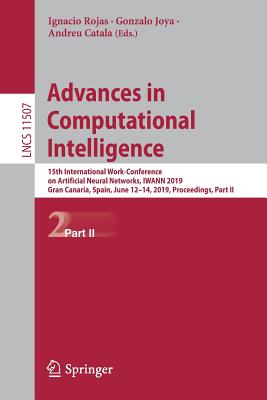Proceedings of Elm-2017
暫譯: Elm-2017 會議論文集
Cao, Jiuwen, Vong, Chi Man, Miche, Yoan
- 出版商: Springer
- 出版日期: 2019-12-10
- 售價: $8,670
- 貴賓價: 9.5 折 $8,237
- 語言: 英文
- 頁數: 340
- 裝訂: Quality Paper - also called trade paper
- ISBN: 3030131823
- ISBN-13: 9783030131821
海外代購書籍(需單獨結帳)
商品描述
This book contains some selected papers from the International Conference on Extreme Learning Machine (ELM) 2017, held in Yantai, China, October 4–7, 2017. The book covers theories, algorithms and applications of ELM.
Extreme Learning Machines (ELM) aims to enable pervasive learning and pervasive intelligence. As advocated by ELM theories, it is exciting to see the convergence of machine learning and biological learning from the long-term point of view. ELM may be one of the fundamental `learning particles’ filling the gaps between machine learning and biological learning (of which activation functions are even unknown). ELM represents a suite of (machine and biological) learning techniques in which hidden neurons need not be tuned: inherited from their ancestors or randomly generated. ELM learning theories show that effective learning algorithms can be derived based on randomly generated hidden neurons (biological neurons, artificial neurons, wavelets, Fourier series, etc) as long as they are nonlinear piecewise continuous, independent of training data and application environments. Increasingly, evidence from neuroscience suggests that similar principles apply in biological learning systems. ELM theories and algorithms argue that “random hidden neurons” capture an essential aspect of biological learning mechanisms as well as the intuitive sense that the efficiency of biological learning need not rely on computing power of neurons. ELM theories thus hint at possible reasons why the brain is more intelligent and effective than current computers.
This conference will provide a forum for academics, researchers and engineers to share and exchange R&D experience on both theoretical studies and practical applications of the ELM technique and brain learning.
It gives readers a glance of the most recent advances of ELM.
商品描述(中文翻譯)
本書收錄了2017年10月4日至7日在中國煙台舉行的國際極限學習機器(Extreme Learning Machine, ELM)會議的一些選定論文。書中涵蓋了ELM的理論、算法和應用。
極限學習機器(ELM)的目標是實現普遍學習和普遍智能。根據ELM理論,從長期的角度來看,機器學習與生物學習的融合令人振奮。ELM可能是填補機器學習與生物學習之間空白的基本「學習粒子」之一(其中的激活函數甚至尚未被了解)。ELM代表了一套(機器和生物)學習技術,其中隱藏神經元不需要調整:可以是從其祖先繼承而來或隨機生成的。ELM學習理論顯示,只要隱藏神經元是非線性分段連續的,且與訓練數據和應用環境無關,就可以基於隨機生成的隱藏神經元(生物神經元、人工神經元、小波、傅立葉級數等)推導出有效的學習算法。越來越多的神經科學證據表明,類似的原則也適用於生物學習系統。ELM理論和算法認為「隨機隱藏神經元」捕捉了生物學習機制的一個重要方面,以及生物學習的效率不必依賴於神經元的計算能力的直觀感受。因此,ELM理論暗示了為什麼大腦比當前的計算機更智能和有效的可能原因。
本次會議將為學術界、研究人員和工程師提供一個論壇,以分享和交流ELM技術及大腦學習的理論研究和實踐應用的研發經驗。
本書讓讀者一窺ELM的最新進展。















